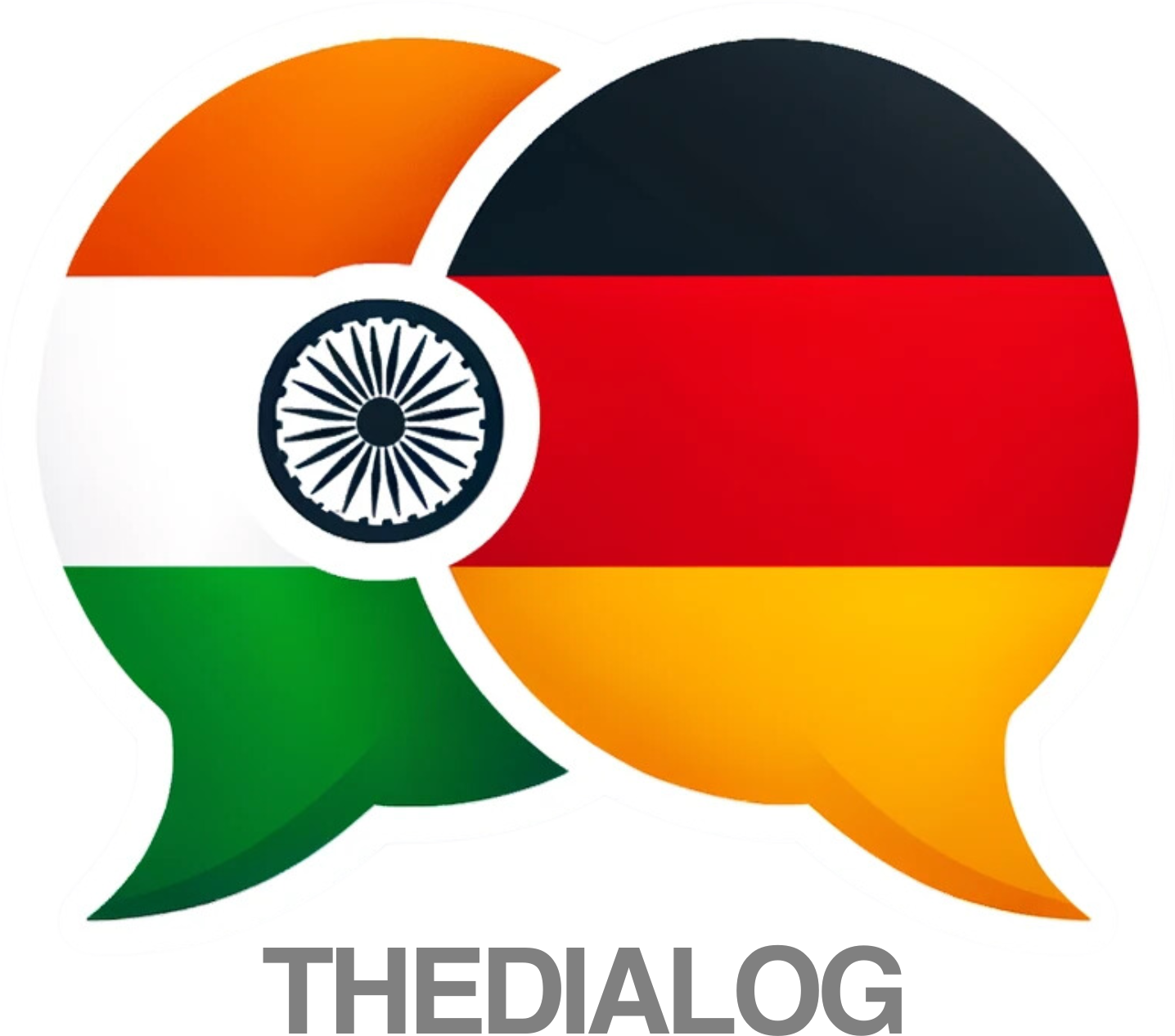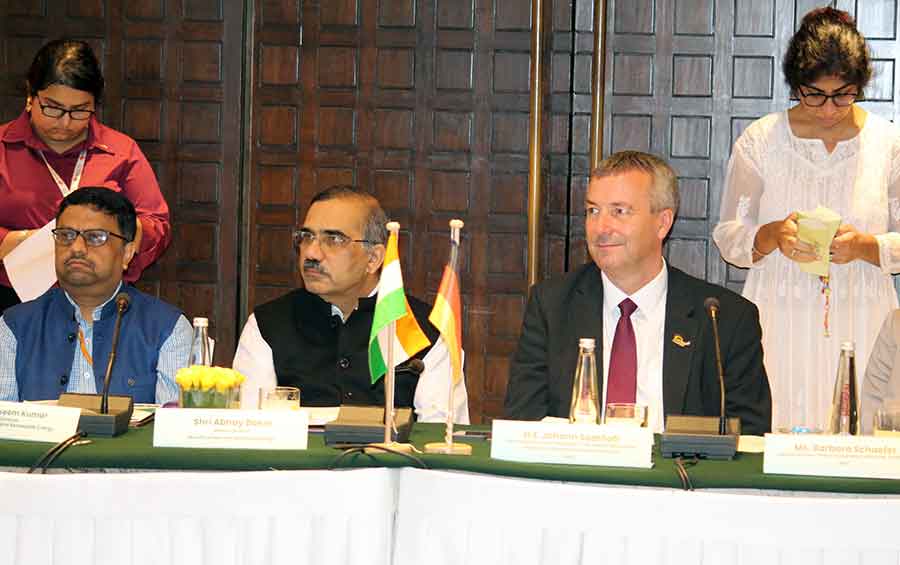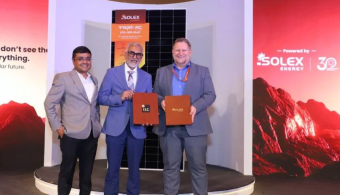In a reaffirmation of their long-standing partnership, India and Germany have strengthened cooperation in renewable energy and sustainability, marking 25 years of their strategic alliance. The renewed commitment was underscored during the visit of Johann Saathoff, German Parliamentary State Secretary in the Federal Ministry for Economic Cooperation and Development (BMZ), who travelled to India from October 30 to November 2, 2025.
The visit, which included high-level meetings and field visits in Chennai and New Delhi, aimed to expand bilateral collaboration in solar, wind, hydrogen, and agriphotovoltaics, as well as in grid modernisation and clean energy financing.
Strengthening Bilateral Cooperation
During his visit, Minister Saathoff inaugurated the German Pavilion at the Renewable Energy India (REI) Expo 2025 in Greater Noida and held a CEO Roundtable with Indian renewable energy companies, organised jointly by the Ministry of New and Renewable Energy (MNRE) and the National Solar Energy Federation of India (NSEFI).
Speaking at the roundtable, Minister Saathoff said he was deeply impressed by India’s rapid progress in renewable energy innovation and implementation. “It has been a great pleasure to be in India and to witness the tremendous energy, innovation, and optimism that drive the country’s clean energy transition,” he noted.
The two sides reaffirmed their intention to strengthen cooperation under the Indo-German Energy Partnership, focusing on decarbonisation, sustainable energy systems, and technology transfer. Germany’s “Team Germany” approach—bringing together BMZ, GIZ, KfW, and private sector players—will continue to serve as the foundation for bilateral collaboration.
Spotlight on Agriphotovoltaics and Wind
One of the highlights of Minister Saathoff’s visit was a visit to the Agriphotovoltaics (Agri-PV) demonstration project at the Indian Agricultural Research Institute (IARI) in Delhi. Developed in collaboration with Germany’s development agency GIZ, the site showcases how solar panels can coexist with agriculture on the same land—helping farmers to produce both food and clean electricity.
Describing Agri-PV as a “third harvest”, the Minister said it was a clear example of how innovative technologies could address food security and energy needs simultaneously. The German delegation also met with researchers and policymakers to explore scaling up such systems across India’s agricultural states.
In Chennai, Minister Saathoff opened Windergy India 2025, the country’s largest wind energy trade fair, where he met with leading Indian and German wind power companies. Discussions focused on expanding investment, enhancing local manufacturing, and supporting hybrid renewable energy parks combining wind and solar.
Clean Energy Financing and Climate Results
Germany remains one of India’s strongest partners in renewable energy financing and policy advisory. Over the years, German development cooperation—through KfW Bankengruppe and GIZ—has channelled more than €1.4 billion into India’s renewable energy transition, especially in transmission infrastructure, solar parks, and battery storage.
According to German government data, this cooperation has already helped provide renewable electricity to 40 million Indians and reduce 110 million tonnes of CO₂ emissions annually, equivalent to almost 20% of Germany’s total domestic emissions.
Minister Saathoff emphasised that the Indo-German clean energy partnership is not just about funding but also about knowledge sharing, innovation, and people-to-people exchange. “Germany and India are committed to shaping a sustainable energy future together,” he said, highlighting Germany’s role as a long-term development partner.
Shared Goals for the Decade Ahead
Both nations reaffirmed their joint vision to support India’s goal of achieving 500 GW of non-fossil energy capacity and 50% renewable electricity share by 2030. Germany, for its part, is investing in global hydrogen supply chains, and India is seen as a key partner in building sustainable hydrogen corridors and manufacturing capacities.
Ambassador Dr. Philipp Ackermann earlier described India as a “crucial partner” in global decarbonisation efforts, noting that the Indo-German energy partnership “embodies the spirit of joint innovation and trust.”
The ongoing collaboration extends beyond government agencies, involving research institutes, industry associations, and startups from both sides—driving applied research and scalable clean energy solutions.
Renewing a 25-Year Partnership
This year marks the 25th anniversary of the Indo-German Strategic Partnership, under which the two countries have evolved from development partners to innovation allies. Clean energy now stands at the centre of that relationship, combining Germany’s technological leadership with India’s scale and growth potential.
As Minister Saathoff’s visit concluded, both governments agreed to intensify collaboration on green hydrogen, offshore wind, sustainable finance, and energy-efficient mobility. The partnership also aims to support India’s Atmanirbhar Bharat and Viksit Bharat 2047 visions through technological cooperation and climate-friendly industrialisation.
Looking Ahead
The next phase of India–Germany cooperation will focus on joint R&D, policy harmonisation, and large-scale deployment of clean technologies. Key challenges remain in areas such as renewable grid integration, local manufacturing ecosystems, and long-term financing models—but both sides see these as opportunities for innovation.
For India, German expertise provides access to advanced green technologies and long-term capital. For Germany, India offers a vast and dynamic market for renewable deployment. Together, their partnership represents a model for global climate cooperation—anchored in shared responsibility and mutual growth.



